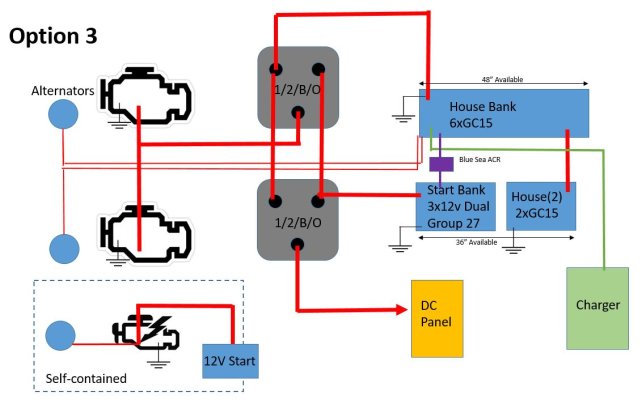Cool... You might, however, want to consider routing the alternators to the house and use the ACR to charge (top off) the starter batteries. Staring engines doesn't take that much from starter batts, but a day or two on the hook will. It is more accepted to use the alts to replenish the house batteries when you are underway, saaaayyy, between anchorages.At least from all that I have learned about the subject.
I would disagree, just add the ACRs to each starting battery to charge the house bank, dead starting batteries are a show stopper, dead house bank is just an inconvenience... My reasoning is if the ACR fails the staring batts are still charged the inverse if the alt are connected to the house bank and the ACR fails then the starting batts can go flat...The other reason with twins you have two alts feeding a common load this can result with one alternator over or under charging ( this is why Balmar produces the center fielder ) . Another reason is unless you have secondary voltage monitoring you will only see the voltage of the house bank with the voltmeter on the engine gauges...



